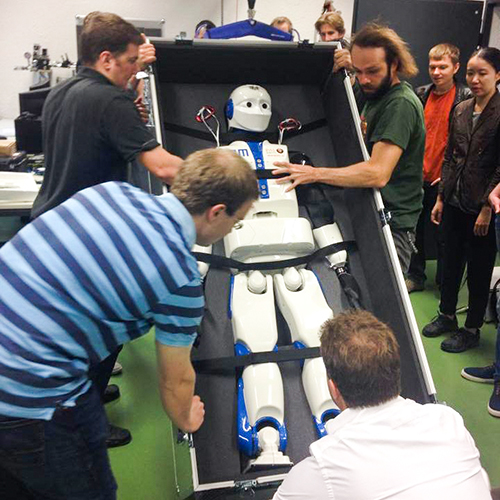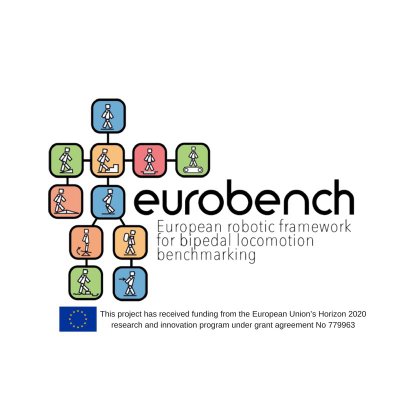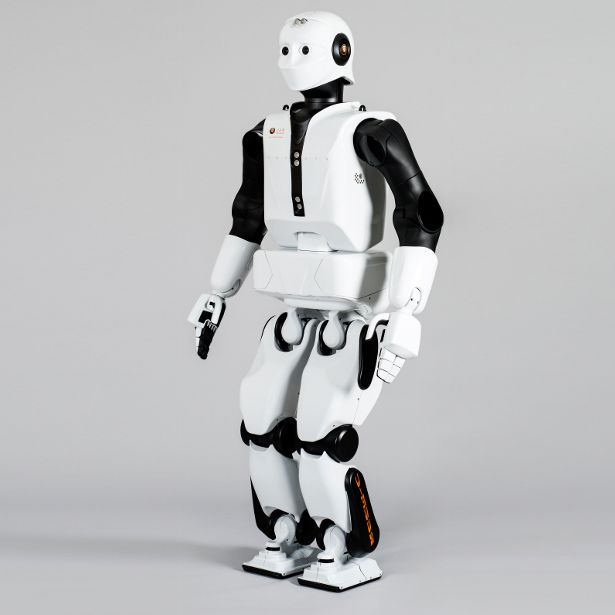A robust biped robot platform
REEM-C is able to walk stably at a speed of up to 2.5 km/h, and can even climb stairs or sit on a chair. Provided with a large autonomy, it is the right biped robot to bring your research in robotics and Artificial Intelligence one step ahead.
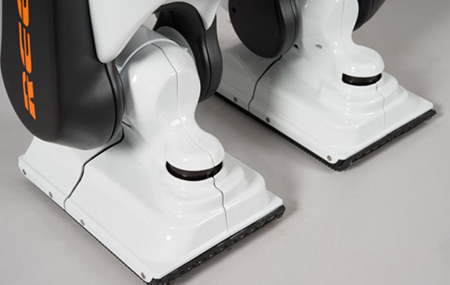
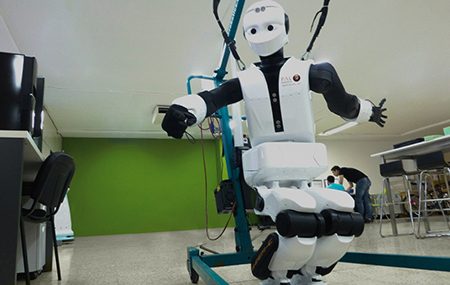
Wide Mobility
REEM-C is provided with 68 DoF that enable a wide set of movements inspired by the human motions. The humanoid robot’s F/T sensors, IMU, and RGB-D camera can help you smoothly implement and test your algorithms for the biped robot platform.
Wide Mobility
REEM-C is provided with 68 DoF that enable a wide set of movements inspired by the human motions. The humanoid’s F/T sensors, IMU, and RGB-D camera can help you smoothly implement and test your algorithms for your biped robot.

Out-of-the-box skills
REEM-C robot comes with a set of skills that work right out of the box, such as walking, grasping, Whole-Body Control or Text To Speech. The humanoid biped robot platform is fully ROS based, allowing to access its sensors and actuators from ros_control real time framework or visualize them in rviz.
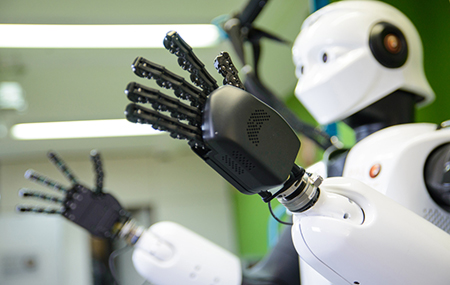
Areas of use
USED FOR RESEARCH IN:
FIELDS OF APPLICATION:
Factory of the Future

Smart Cities and IoT

Ambient Assisted Living
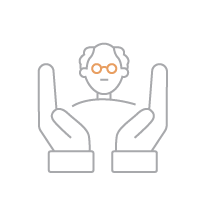
Benchmarking

REEM-C IS USED IN…
Videos REEM-C in action
PAL Robotics proudly presents its new robotics research platform REEM-C. A fully ROS-based humanoid biped robot.
REEM-C biped robot using an application based on Whole Body Control (WBC). The humanoid robot developed by PAL Robotics as a robot research platform reacts to the force applied on its wrist, moving all its body in order to maintain the balance. Demonstration for exploitation of check SMCs. The EU-H2020 Project SocSMCs is supported by the European Commission. More information available on the page of the socSMCs Project.
REEM-C biped robot sitting on a chair and getting up. Shot at PAL Robotics on 01/04/2014.
REEM-C doing some body control exercises.
Watch REEM-C standing on one leg and keeping balance while it’s being pushed.
REEM-C biped robot from PAL Robotics makes a step when being pushed by an external force in order not to fall down.
REEM-C’s unboxing process.
Technical specifications
Contact PAL Robotics and get in touch with a team of experts
who can assess you and provide you with more information of REEM-C.
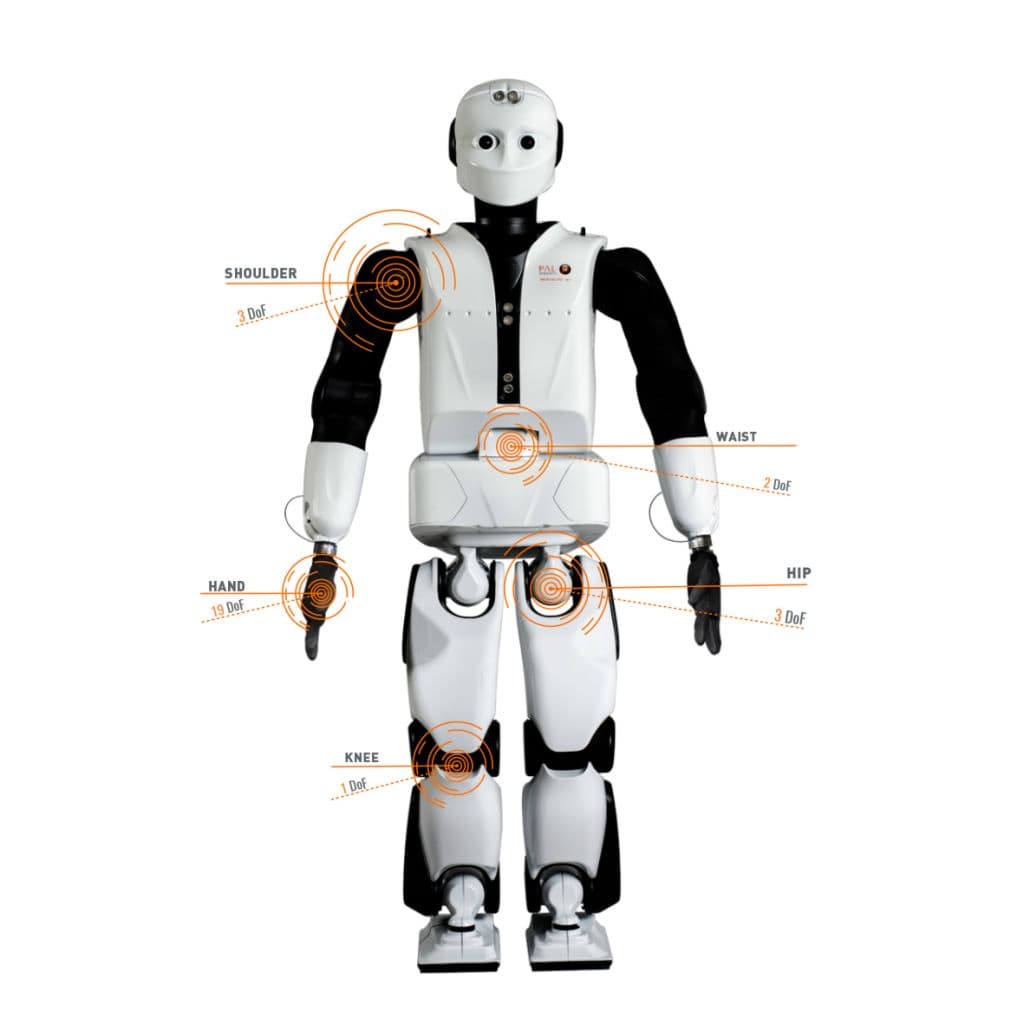
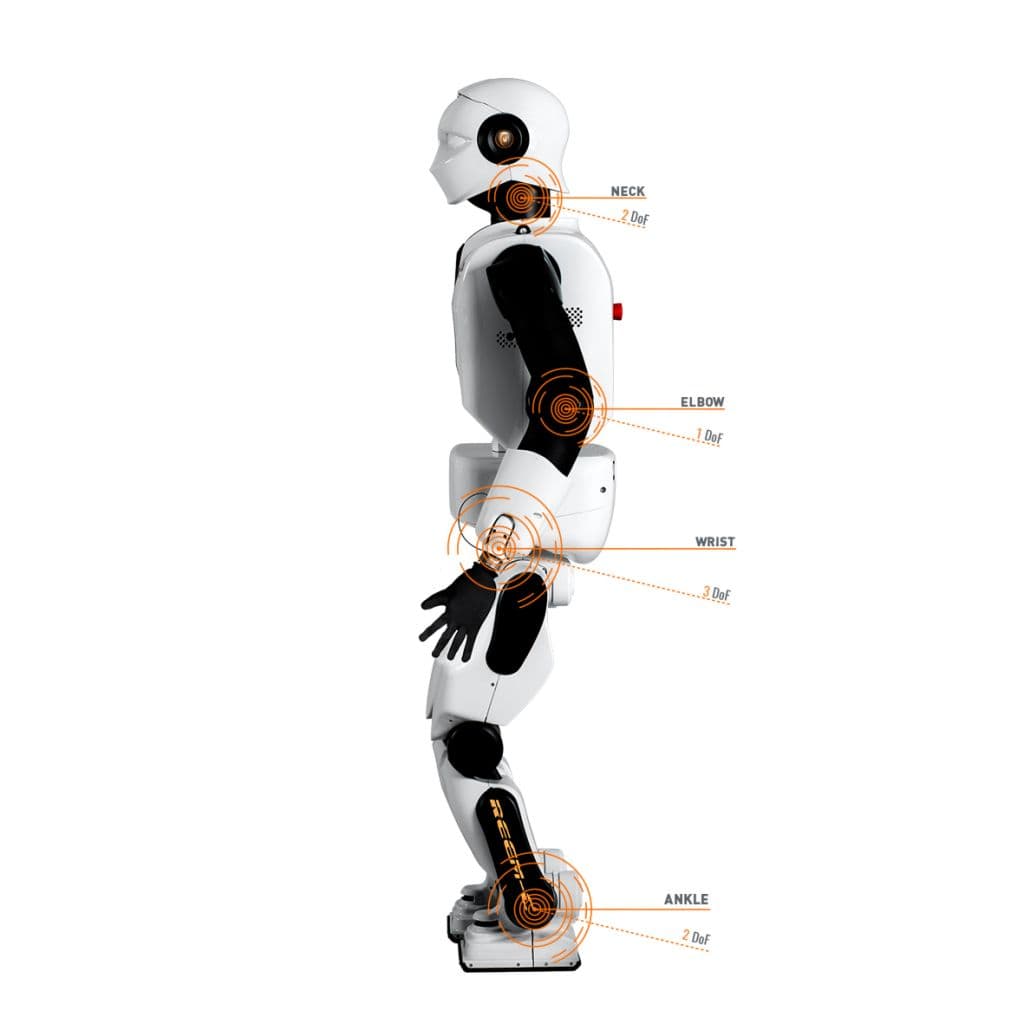
SPECS
| Height | 165 cm |
| Weight | 80 kg |
| Hand payload | 1 kg (arm stretched) |
| Battery autonomy | 3h walking / 6h stand by |
| OS | Ubuntu LTS, Real Time OS |
| F/T Sensors | In ankles and wrists |
OPEN SOURCE
Simulation model available at: wiki.ros.org/Robots/REEM-C

PREMIUM SOFTWARE
Speed your research with extra software: from Whole-Body Control
to navigation, HRI skills or teleoperation.
Citations
Research Projects of the Humanoid Robot Platform REEM-C
Subscribe to our Newsletter
 Register for PAL Robotics’s newsletter and stay up to date with product news, relevant events and exhibitions, and other relevant information about PAL Robotics.
Register for PAL Robotics’s newsletter and stay up to date with product news, relevant events and exhibitions, and other relevant information about PAL Robotics.

